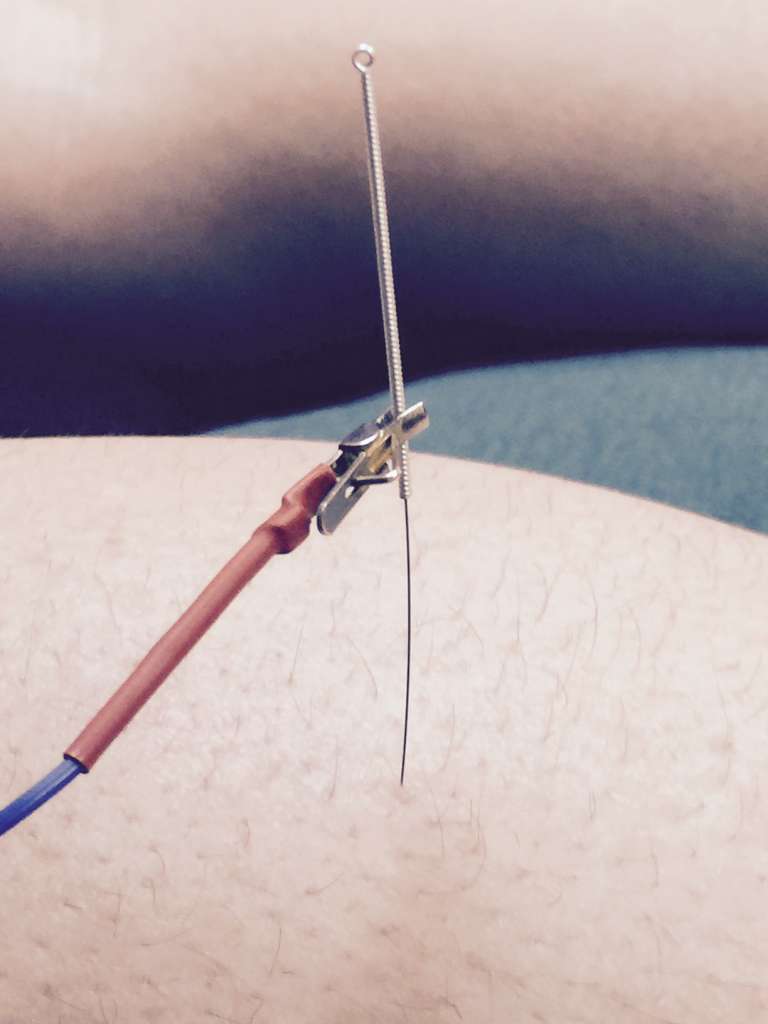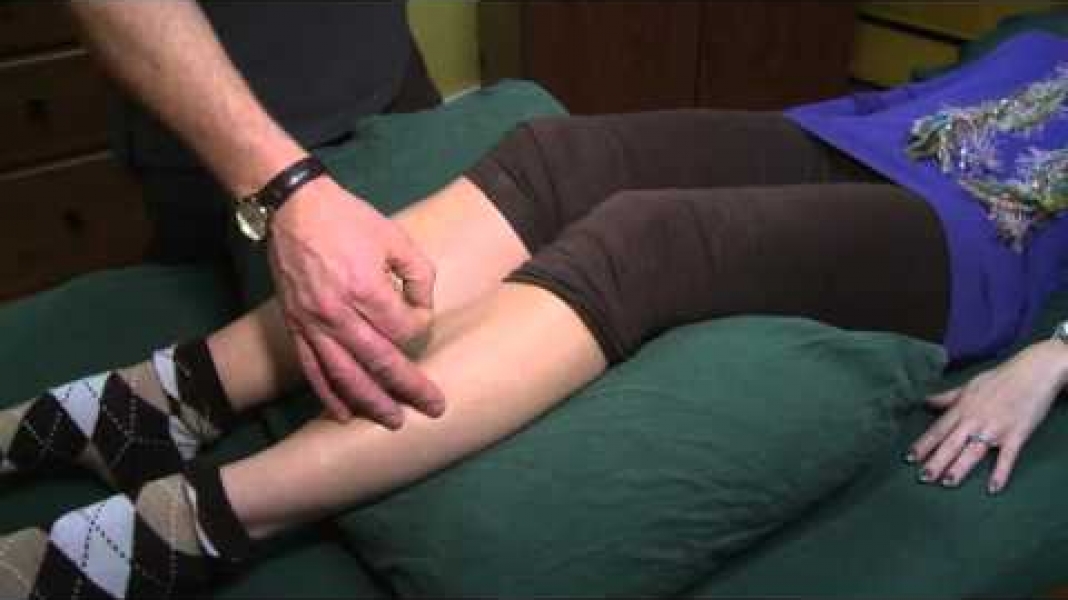
Dr. Elorriaga is trained as a medical doctor and specialized as an anaesthetist. Of course, doctors in this specialty are interested in minimizing pain. He developed a special interest in sports medicine, and has worked on Olympic athletes such as Donovan Bailey. Originally from Spain, he is now an Assistant Clinical Professor at the McMaster University Department of Anaesthesia, where he has been developing this neurofunctional electro-acupuncture concept to treat sports injuries and movement disorders as the director of the Contemporary Medical Acupuncture Program at McMaster University. Like Alina and me, his clinical strategy is to use acupuncture in a way that makes sense from a scientific explanation.
The foundation of Dr. Elorriaga’s interest is the growing body of scientific evidence that chronic pain issues are almost always a “software” neurological problem. This is especially so for pain that has developed over time with no particular traumatic origin. But this even applies for traumatic injuries, where over time the original trauma is more or less healed, but nerve reflexes and tissues supplied from the nerves are changing from the injured context. A good example would be a man with a limp due to a hip muscle injury. Originally the limp was adaptive, in that it took weight off the injured muscle, made touching the area sensitive, and created a healing space from which the muscle could recuperate. But over time, this limp for various reasons may not go away. Not only is it a learned pattern by the nervous system, but it reinforces itself both at the tissue and neurological levels.
So in general, acupuncture seems to work with pain issues, in various ways locally and in the nervous system, by “resetting” the wiring message (pain and muscle tone), even if just for a few days. From this place, a new pattern is adopted that can become a positive and healthier pattern reinforcing better function. Dr. Elorriaga identifies and focuses on the nerves that go to and from the area affected, and not on the area of dysfunction directly. He uses the symptoms of sensation (numbness, tingling) and the nature of pain, and changes in the physical tone (tightness, lack of tone, etc) to diagnose the neurological pattern of dysfunction (the software problem). Next he determines the nerve system feeding the problem area. Then he inserts a needle near to a nerve supplying or in common with one supplying the affected area, and stimulates it with electricity. In other words, he does not need to put a needle into the painful muscle! This technique takes significant knowledge of the nervous system of course, and precision in applying a needle near a nerve. When a needle is placed very close to a motor nerve or a nerve bundle, electro-stimulation will cause a painless muscle twitching. Low frequency 4 Hz contractions can relax over-tight muscles, and slightly faster stimulation can activate muscle systems that are atrophied due to an inability to fire from disuse or injury.
Dr. Elorriaga said he wanted to overwhelm us in the seminar, to open our eyes to the possibilities, and to give us our next 10 years of homework in medical science. To us, it was ironically in the reverse order; the decades of our medical and scientific training and readings on the neuro-anatomy of the body represent the foundation enabling us to quickly integrate his work into our practice now. But more interesting to us is that our medical backgrounds allow us to integrate and understand the traditional teachings from a science perspective. This has provided us with better insights as to why many traditional acupuncture points may work regionally, since they are near major neurological pathways. Treating pain by not going after the pain is not unique to just neurofunctional acupuncture. In traditional Chinese medicine this principle is very important. A painful condition can be treated in various ways away from pain based on continuous physical systems called meridians. Although traditionally it was said that “Qi” flows in these meridians, from a modern scientific point of view they may represent connective tissue systems running lengthwise along the limbs between muscles and bones. Not surprisingly, they are very close to the internal channels that contain the vital plumbing systems of nerves and blood vessels! These traditional meridians are named after organs, and may relate to organ-body reflexes as discussed in another blog (here).
What is important about Dr. Elorriaga’s methods, is that he is very systematic and strategic about how to diagnose the problem and what to do with the needles from a scientific framework. Doing neurofunctional electro-acupuncture requires a very sophisticated understanding of anatomy and neurological map of the body; but this can be learned and shared and developed by all practitioners.
We have come back to our clinic realizing that we don’t have to throw the proverbial baby out with the bathwater! The traditions of acupuncture are legitimate when framed in the modern language of science. From these universal principles of science, we can communicate and debate to test treatment strategies within our growing body of evidence-based knowledge.




